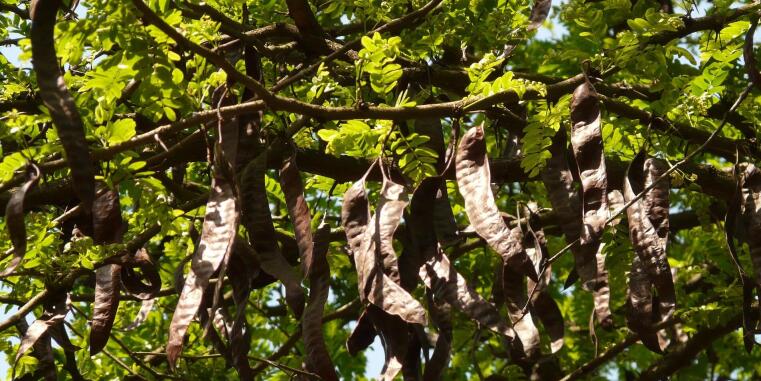



order: Fabales
family: Fabaceae
genus: Ceratonia
species: carob (Ceratonia siliqua)
attributes: tree measuring four to eight meters in height
origin: Mediterranean area until Iran
habitat: sandy areas in Palestine, the Mediterranean area and western Asia, also introduced to Africa and southern Australia
And He said, A certain man had two sons And the younger of them said to his father, Father, give me the portion of goods that is coming to me. And he divided his living to them. And not many days afterward, the younger son gathered all together and went away into a far country. And there he wasted his property, living dissolutely. And when he had spent all, there arose a mighty famine in that land. And he began to be in want. And he went and joined himself to a citizen of that country. And he sent him into his fields to feed pigs. And he was longing to fill his belly with the husks that the pigs ate, and no one gave to him. And when he came to himself, he said, How many hired servants of my father abound in loaves, and I perish with hunger! I will arise and go to my father, and will say to him, Father, I have sinned against Heaven and before you and am no more worthy to be called your son. Make me like one of your hired servants.
Luke 15, 11-19
In the Parable of the Prodigal Son (Lk 15,16) the protagonist is so hungry that he wants to eat the husks fed to the pigs. They were considered a common hogwash. In times of need they could also be eaten by humans.
The carob is not mentioned explicitly in the Bible, though it is in Mischna (oral traditions of Judaism) and Talmud (composed of Mischna and a commentary called Gemara). The German name (John bread tree) is derived from John the Baptist. It is deduced by the association of the wild honey he‘s supposed to have eaten in the desert with the sirup-like juice of the carob. Another deduction refers to the same passage. According to it, the locusts mentioned in Matthew (Mt 3,4) were actually the fruit of the carob. This is explained by the similarity of the Hebrew words for locusts (hagavim) and carob (haruvim).
And the same John had his clothing of camel's hair and a leather girdle about his loins. And his food was locusts and wild honey.
mentions: several
other text passages (selected):
Mt 3,4
Mk 1,6
Riede, Peter: Johannisbrotbaum, in: Das wissenschaftliche Bibellexikon im Internet (Jan. 2017), URL: https://www.bibelwissenschaft.de/wibilex/das-bibellexikon/lexikon/sachwort/anzeigen/details/johannisbrotbaum/ch/177b33e2894339b24c733faf42d3301e/ (abgerufen am 01.05.2023).
Modern King James Version.


